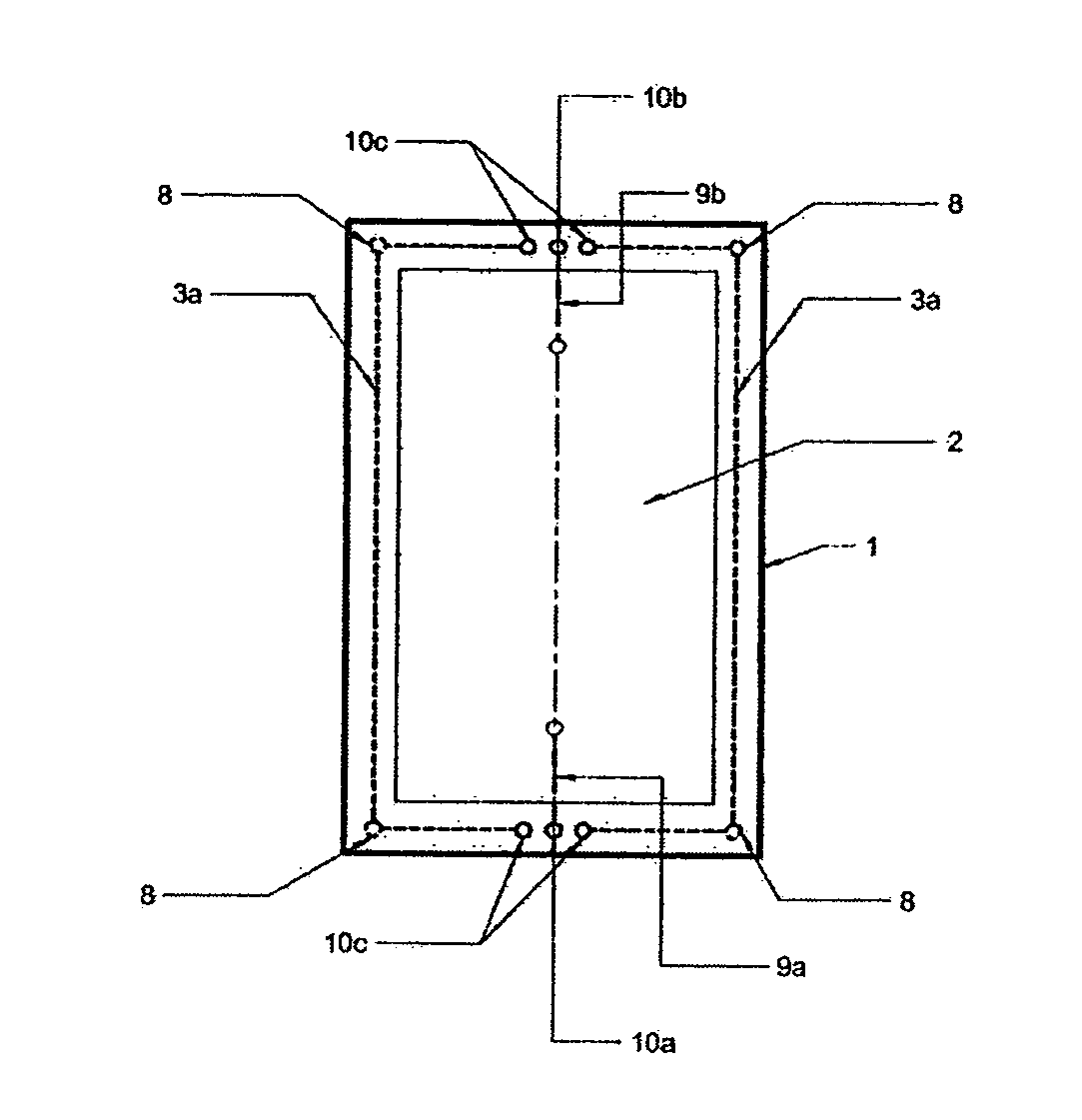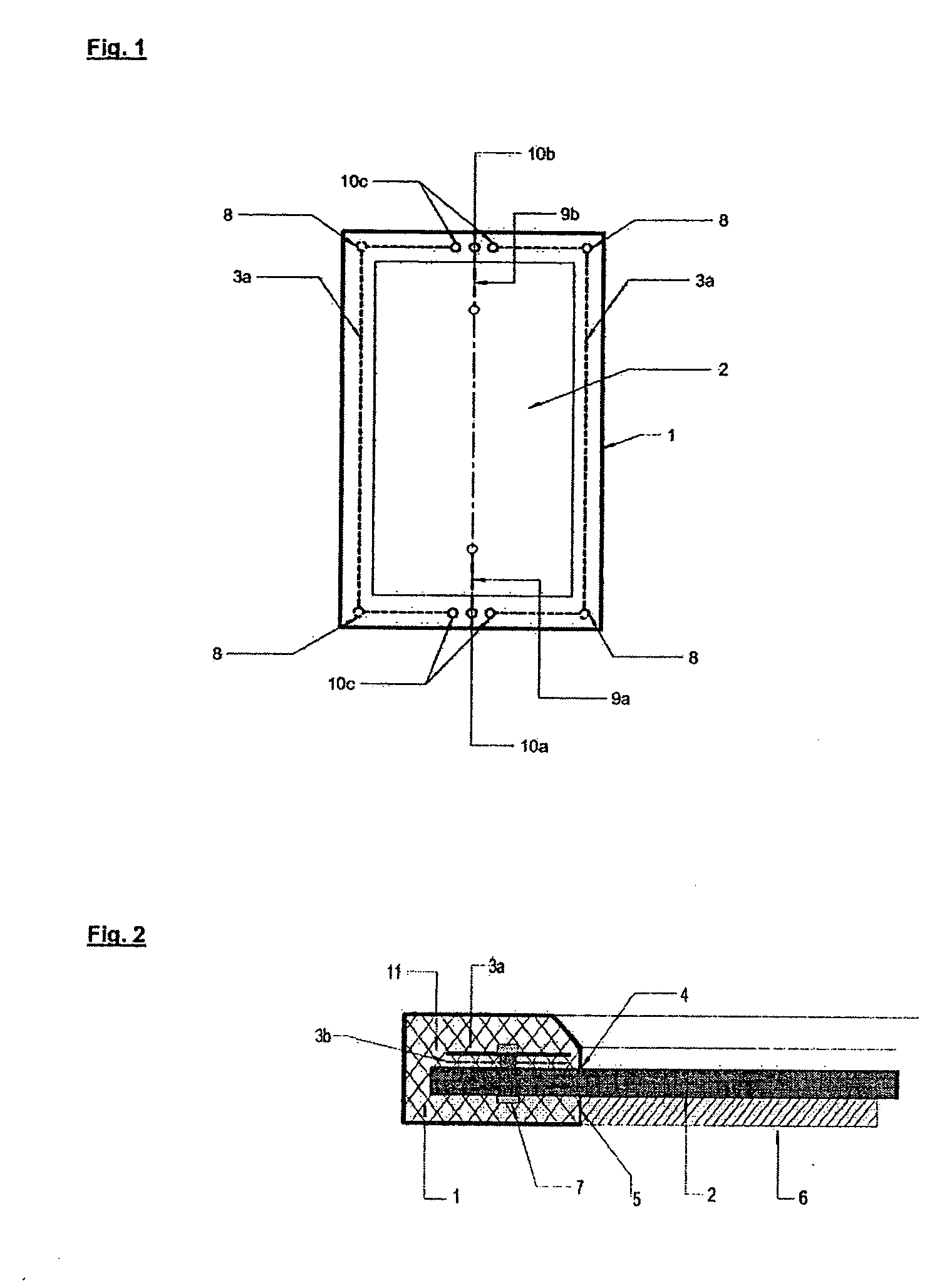Flexible solar power module with a current lead integrated in the frame
a solar power module and current lead technology, applied in photovoltaic energy generation, sustainable buildings, photovoltaic energy generation, etc., can solve the problems of not being able to meet building integration requirements, module flexibility is not good, and foil modules are limited in flexibility. , to achieve the effect of not being used for building integration purposes
- Summary
- Abstract
- Description
- Claims
- Application Information
AI Technical Summary
Problems solved by technology
Method used
Image
Examples
Embodiment Construction
[0051] This invention describes a method nevertheless for the purpose of framing flexible laminates, e.g., of the trademark “UNIsolar®” with a polyurethane by means of RIM-technology. The already mentioned disadvantages of the front-side de-adhesion and the deflection are in fact avoided where the through-wiring consisting preferably of a flat copper band is at first applied to the front side onto the Teflon® foil and is durably joined to the laminate by riveting and / or by a suitable and special cementing.
[0052] The frame on its part sticks securely to the copper band so that the disadvantageous de-adhesion of frame and laminate, as observed without through-wiring, does not occur.
[0053] Furthermore, the rear side of the laminate is provided with a covering before the manufacture of the frame, for example with a foamed or compact synthetic panel. This panel does not shrink or heat up during the framing process, so that there is no disadvantageous deflection of the laminate which oc...
PUM
 Login to View More
Login to View More Abstract
Description
Claims
Application Information
 Login to View More
Login to View More - R&D
- Intellectual Property
- Life Sciences
- Materials
- Tech Scout
- Unparalleled Data Quality
- Higher Quality Content
- 60% Fewer Hallucinations
Browse by: Latest US Patents, China's latest patents, Technical Efficacy Thesaurus, Application Domain, Technology Topic, Popular Technical Reports.
© 2025 PatSnap. All rights reserved.Legal|Privacy policy|Modern Slavery Act Transparency Statement|Sitemap|About US| Contact US: help@patsnap.com



